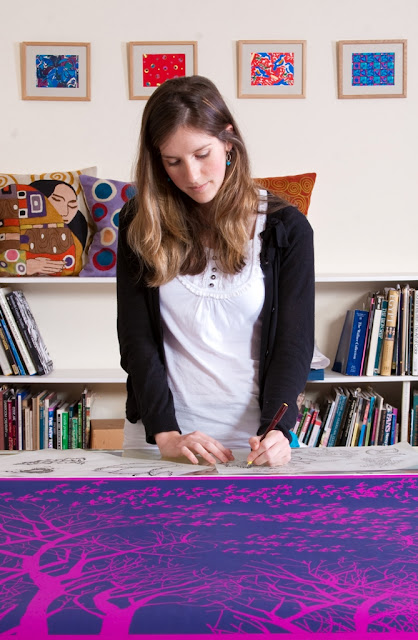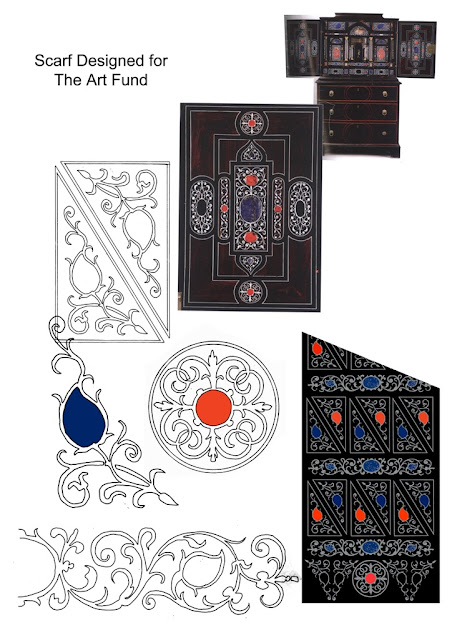Beckford Silk is one of the original ‘factory shops’ where visitors can come and watch the printing and get an insight into how our scarves and ties are printed and made.
We have two half hour tours a day, at 11.30am and 2.30pm Monday to Friday for individuals up to a maximum of 10. We also offer a talk and tour for larger booked parties by prior appointment. If you are coming along for one of the daily tours then it is worth phoning in advance to make sure it’s going ahead as party bookings will take precedence.
This morning’s tour was taken by one of our printers, Rob. He met the group in the shop at 11.30 and took them upstairs to where we do the printing.
He explained the colour separation and screen making before carrying on with the print that he was working on which was for an order of dress fabric.
 |
| Rob explains the printing |
Once he had finished the print he took the group downstairs and through to the steam room to explain the steaming and fixing of the colour into the cloth.
| Steaming and fixing the colour |
They then went through to the main workshop which houses the dye winches and colour kitchen. James was in there making up a batch of dye for Rob’s next print.
| James at work in the dye kitchen |
Finally Rob took the group through to the Stenter Room. The Stenter is the large machine that we use to dry and finish the cloth once all the other processes have been completed.
| Rob explains how the Stenter works |
The daily tours normally run Monday to Friday and we charge £3 per adult (children under 15 are free). However this is then redeemable against a purchase in the main shop (not the Silk Store).
If you are interested in booking a larger group tour then do give us a call on 01386 881507 and ask for Anne.





